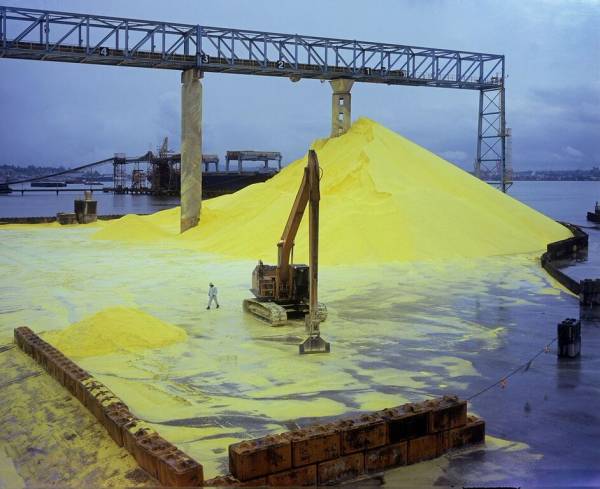ABOUT SULPHUR
Sulphur is used in fertilizers, normally in the form of ammonium sulphate, where there is a deficiency of sulphur in the soil.
Sulphur is also used to make sulphuric acid from sulphur dioxide. Sulphur dioxide is used to make dyes and as a bleaching agent.
Sulphur has a pale yellow appearance and has a slight odour of rotten egg. It is insoluble in water but soluble in carbon disulphide.
It is found in meteorites, volcanoes, hot springs, and galena, gypsum, Epsom salts, and barite. It is also a minor constituent of fats, body fluids, and skeletal minerals.
There are two key sources of processing sulphur. The first is the Frasch process, where sulphur is extracted from underground without mining it.
In the Frasch process, underground deposits of sulphur are forced to the surface using superheated water and steam (to melt the sulphur) and compressed air. This gives molten sulphur, which is allowed to cool in large basins. Purity can reach 99.5%. The process is energy intense.
Another source of sulphur is as a by-product of processing crude oil and natural gas, which contain hydrogen sulphide. It is produced in crush lump, flake, and prilled form.
Key industrial uses of sulphur includes production of black gunpowder, asphalt, vulcanisation of natural rubber, as a fungicide and as a fumigant, use in the bleaching of dried fruits and for paper products.
METHODOLOGY
Our price assessments are based on information gathered from a wide cross-section of the market, comprising consumers, producers, traders, and distributors from more than 250 reporters worldwide. Confirmed deals, verified by both buyer and seller, provide the foundation of our price assessments.
Our in-depth market knowledge drives our specialist focus, as we recognize the importance of individual market dynamics and not a one-size-fits-all approach.
Over the years of reporting on key chemicals markets, including Sulphur, has brought global recognition of our methodology as being unbiased, authoritative, and rigorous in preserving our editorial integrity. Our global network of reporters in Houston, London, Singapore, Shanghai, Guangzhou, Mumbai, Perth, and Moscow ensures unrivaled coverage of established and emerging markets.
Sulphur Methodology
Sulphur (S) is an important element in nature. As a constituent of proteins has a similar nutrient value to nitrogen (N) and is essential to the life of plants, with its lack causing similar effects to the lack of nitrogen.

REGIONAL OVERVIEW
Updated to Q3 2021
Asia
Supply is expected to tighten in the Middle East, as Arab Gulf cargoes are expected to fulfill the demand that would normally be fulfilled by producers in Kazakhstan and Russia.
Demand in Asia will be highly influenced by China’s appetite for sulphur. Chinese inventories are seen dropping, forcing buyers to re-enter the import market for bigger volumes. The downstream phosphates sector remains firm, which is boosting sentiment for feedstock sulphur in China and India.
Europe
Refinery output is expected to remain tight in northwest Europe. In Russia, Gazprom is understood to be planning to export 300,000-400,000 tonnes in Q3, down from 800,000 in the same period in 2020.
Demand should pick up, as caprolactam producers re-enter the market after planned and unplanned shutdowns. However, others are expected to enter turnarounds during Q3.
US
Sulphur supply is expected to improve during Q3 if refinery utilization rates remain at their pre-pandemic levels, which were reached early in Q3.
Demand should remain strong during Q3, from essentially all-consuming sectors – fertilizer markets, sulphuric acid producers, and the industrial sector.


